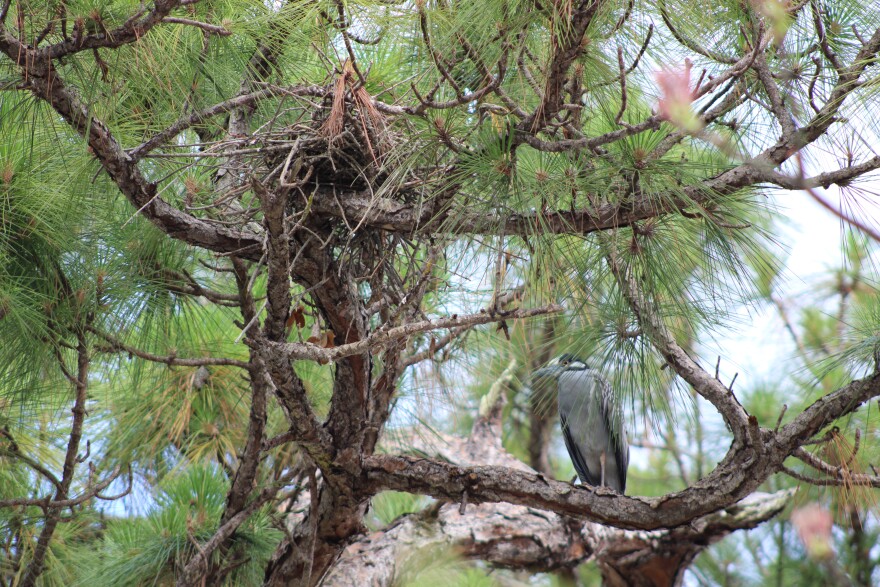The beautiful yellow-crowned night heron is an ancient bird. According to the Cornell Lab of Ornithology, the earliest recorded fossil of this species goes back two to two-and-a-half million years — in Sarasota, Florida.
In South Florida, these birds are year-round residents.
In late March, a pair of yellow-crowned night heron began their courting process in a slash pine tree in a historic east Boca Raton neighborhood, where slash pines, live oak and a variety of ancient tropical canopy exist.
South Florida’s slash pine trees are home to a variety of birds and animals, including the yellow-crowned night heron.
Their loud calls can come as a surprise. Their slate gray bodies, sharp black-and-white faces, and long yellow plumes make this bird quite elegant and graceful.

The couple spent weeks building a nest together. The male carried sticks to the female, who used her beak to create the nest on a branch of a slash pine tree 40 feet above the ground.
The nest looks like a messy pile of random placed sticks, but it is very strong. Together, this couple took turns incubating the pale blue-green eggs. Yellow-crowned night herons have one brood a year.
During the beginning of May, the faint cries of newborn chicks were heard throughout the day, muffled by the sound of nearby traffic and residential air conditioners. The parents also took turns caring for the chicks, never leaving them unattended.

By the end of May, the chicks began to stand in their nest. Then, in the beginning of June, they began to explore the ground beneath them, looking for things to eat like frogs and earthworms.
Juvenile yellow-crowned night herons are grayish-brown in color, with speckled white dots. It will take years before they have the gray plumage like their parents.
By the end of June, these juveniles began to fly, in search of crustaceans.
In South Florida, the mating season for the beautiful yellow-crowned night heron is early spring to mid-summer.







